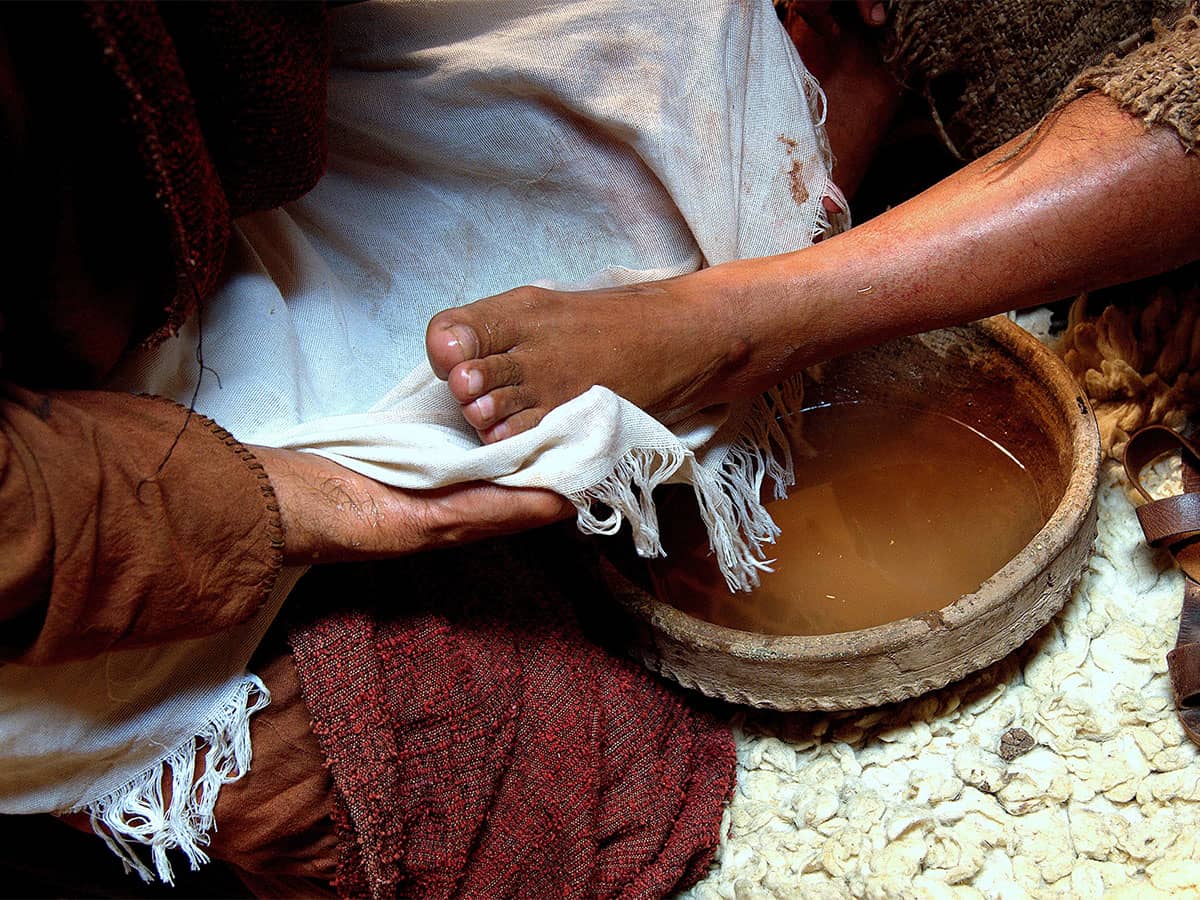
“Now when He (Jesus) rose early on the first day of the week, He appeared first to Mary Magdalene, out of whom He had cast seven demons.” (Mark 16:9) This had to have been the most fantastic moment in Mary’s life: to be the first to see Jesus after being raised from the dead. She was initially unsure whether this was real and thought that maybe she was dreaming. But after that first hesitation, she was confident that she was seeing Her Lord, Teacher, Messiah. Everything in the Bible is intentional and specific; therefore, it must be clear that Jesus chose Mary Magdalene to be the first to see Him. He could have shown Himself to any one of His disciples. They were there just minutes before He appeared to Mary. He could have revealed Himself to the whole group to have more witnesses for His first appearance, yet he waited until they walked away to their own homes (John 20:10.) Then He appeared to Mary while she was weeping and mourning Him, upset because she thought His body had been taken away.
She must have been a special person to be chosen for the momentous occasion of His appearing for the first time after His resurrection. There must have been something about her that she was the right person for that moment. Mary Magdalene has been a mystery to most of us. We see her as a genuine follower of Jesus who seemed to be on the scene of some of the most critical moments in the ministry of Jesus. But what makes her story even more of a mystery is that the Scripture tells us that she had been healed of seven evil spirits and other infirmities (John 8:2.) This is our first glimpse of this woman. Yet, all through the gospels, we find her to be compassionate, caring, loyal, and sincere in her faith, a complete transformation as she dedicated her life to supporting His ministry in whatever way she could. What can we learn from this enigma we called Mary Magdalene, or Mary of Magdala?
She was a loyal friend.
Mary Magdalene is found several times with Mary, the mother of Jesus when she needed her for support. Mary Magdalene accompanied His mother while the multitude followed Jesus carrying His cross to the place of His crucifixion. She was also with His mother at the foot of His cross as they waited for the end to come in John 19:25. She was also there when His body was put in the tomb, and the stone was rolled over the opening. These had to be the most excruciating moments in a mother’s life, and Mary Magdalene was there not only because she was a disciple but because she was there to support a friend. She showed compassion and caring in her actions by lending her peaceful presence in a time of horrendous agony.
We should consider these as ways to support our friends and family when devastation comes to people we know. Our presence is needed more than words. To be there for someone while they are going through something is the most important thing we can do, and we commit to the time and space that that person needs. We are to rejoice with those who rejoice, but it also says to weep with those who weep (John 12:15.) Having empathy when someone is going through an upsetting circumstance is a compassionate and caring way to show God’s love to others. Those moments are not for words but for peaceful support. Learn to be still and quiet in their presence. They don’t want to hear clichés; they don’t want platitudes. They want a friend who will physically be there.
Proverbs 17:17 says, “A friend loves at all times, And a brother is born for adversity.” A true friend will stand by when someone hurts, even if the hurt is from their own bad choices. We must love people where they are and give them the confidence that they are loved. Trouble is not the time to walk away but a time to move forward and show God’s love when it is hard. If we love when it’s easy, we have not done anything extraordinary. God gives us His love, which allows us to love extraordinarily.
She was a loyal disciple.
Being a disciple is no easy task. Just because someone gets born again does not necessarily mean that they immediately become a disciple. Following someone’s teaching, philosophy, or lifestyle does not make someone a disciple. Becoming a disciple is committing to growing in knowledge and then applying that knowledge in life applications. Mary Magdalene was a devout disciple. John 8:1-3 tells us two important things about her. This is where we are first told of her past of being demon-possessed but delivered, and second, we learn that she was a supporter of Jesus’ ministry.
The Scripture lists her and two others with the twelve disciples; she constantly traveled with them, hearing and learning. It also says that these three women support them from their “substance,” translated as “possessions.” These women were giving monetarily to the ministry and, most likely, their provisions, such as food from their households.
Mary Magdalene was found close by so many times, which gives us the impression that she wanted to be near Him as much as possible, even in his death. She was there to witness the horrible death of her teacher and Messiah. She even lingered, weeping and mourning, after the other disciples had left when they believed His body had been stolen. This commitment may be one of the reasons Jesus chose her to be the first to see Him after He was resurrected from the dead.
Our commitment to being close to Him and being found faithful in His presence, learning, and applying the Word to our lives should be no less than Mary’s commitment to Jesus. She is an excellent example of how we can be near Him, supporting Him in substance and being in His presence. In our prayer life, worship, and daily lives, our commitment should be evident to Jesus and others around us as a testimony of our loyalty, faithfulness, and discipleship.
She was a loyal witness.
After Mary Magdalene, along with His mother, witnessed the death and burial of Her Lord and Messiah, she continued to stay close. She was part of the group of ladies that spent their own money to buy the spices needed to anoint Him (Mark 16:1.) At this time, these ladies saw that the stone was rolled away. The angel told them that He had risen and to tell the others. They immediately ran to tell them.
Soon after this, Jesus appeared to Mary Magdalene for the first time. She was once again near the tomb, pondering these things, weeping, and trying to make sense of it all. Then, first thinking He was a gardener, she inquired about Jesus. He acknowledged to her who He was. (John 20:15.) What an astonishing moment that must have been for her.
Then He gave her a message to share with the disciples. “…go to My brethren and say to them, ‘I am ascending to My Father and your Father, and to My God and your God.’ (John 20:17b) She immediately went to give the disciples Jesus’ message. She did not hesitate but ran as fast as she could to share the news that Jesus had risen. She was the first witness to share the gospel. A woman who had had seven demons in her, had them cast out of her, had become a supporter and disciple of Jesus, and was the first person to see Jesus alive after His crucifixion. And she was a loyal witness to share this news as soon as possible.
Mary Magdalene reminds us that no matter our past, we are righteous in His sight once we receive Him as Savior. It does not matter what we have done, how deep we think our sin was, or how unworthy we might think we are; once we received Jesus as our Savior, He sees us as an heir of God and a joint heir with Christ. That is what He died for, to have fellowship with Him.She is a perfect example of a complete transformation that stemmed from becoming a disciple, spending time in His presence, supporting Him, and growing her knowledge and applying it to her life. She should inspire us to be a disciple who craves His company and is diligent to grow by being in the Word and His presence. And in doing that, we can share our stories and show the love of God in us.

